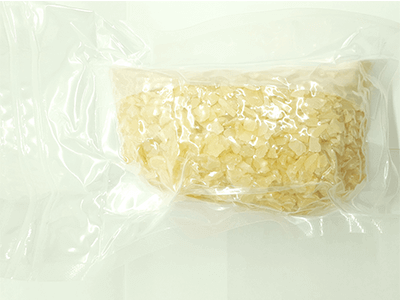What Is Zinc Sulfide?

Zinc sulfide is a sulfide of zinc represented by the chemical formula ZnS.
Zinc sulfide is a white or yellow powder or crystal with a density of 4.0 g/cm3, a melting point of 1,718°C, and a sublimation point of 1,180°C. It occurs naturally as sphalerite or zinc-blende and rarely as wurtzite.
Generally, it exists as a stable cubic form and is produced as sphalerite. The hexagonal form is obtained synthetically, but also occurs naturally as wurtzite.
Uses of Zinc Sulfide
Zinc sulfide is used as a raw material for phosphors, paints, rubber pigments, lithopons, leather, dental rubber, X-ray screens, and semiconductor laser crystal materials. Zinc sulfide with appropriate impurities has long been used as a silicophore because it emits silica light when irradiated with ultraviolet light.
The color of the light emitted can be changed depending on the type of impurity, and because it also emits light when exposed to an electron beam, it is applied to the silica-light surface of cathode-ray tubes in televisions and other equipment. When mixed with small amounts of radium or thorium, it is also used as a luminous paint for watches.
Properties of Zinc Sulfide
When Zinc sulfide is moist, it is gradually oxidized in air to zinc sulfate. Zinc sulfide is insoluble in water and alkalis and soluble in mineral acids. Newly made zinc sulfide is soluble in acids.
Naturally occurring sphalerites and wurtzites are semiconductors with large intrinsic band gaps; the band gap values at 300 K are 3.91 eV for wurtzites and 3.54 eV for sphalerites.
Zinc sulfide is a covalent compound with the composition ZnS. At approximately 1,293 K, a transition from a zinc sphalerite-type to a wurtzite-type crystal structure occurs. The melting point of the sphalerite form of Zinc sulfide is 1,991 K. The standard enthalpy of formation at 298 K is -204.6 kJ/mol.
Other Information on Zinc Sulfide
1. Synthesis of Zinc Sulfide
Zinc sulfide is produced by the direct compounding of sulfur and zinc. Zinc sulfide can also be obtained by blowing hydrogen sulfide into an aqueous solution containing zinc ions.
2. Zinc Sulfide in Atomic Physics
In early atomic physics, Ernest Rutherford and his colleagues used zinc sulfide as a scintillator, a phosphor material. Zinc sulfide emits light when excited by radiation such as alpha rays, X-rays, and electron beams. Zinc sulfide is therefore useful as a sensitizer for X-rays and as a material for cathode ray tubes. In the presence of impurities, it becomes phosphorescent and emits blue light and ultraviolet light.
Since automatic measurement was difficult with the technology of the time, Rutherford et al. used zinc sulfide powder to count the luminescence by eye in a dark room. They proved the existence of nuclei by applying the technique to the experiment of Rutherford scattering, in which alpha rays are irradiated onto a material. Zinc sulfide is still useful as an element for alpha-ray detection.
3. Zinc Sulfide as a Light-Storing Agent
Zinc sulfide can be used as a phosphorescent agent. Adding a few ppm of activator makes it useful for cathode ray tubes and X-ray screens, as well as for components that glow in the dark. For example, the light emitted will be bright blue when silver is used as an activator and yellow when manganese is used.
A well-known phosphorescent agent is copper, which emits light for a long time and has a greenish color. Zinc sulfide doped with copper is also used in electroluminescence panels.
4. Other Applications of Zinc Sulfide
Zinc sulfide is also used as an optical element for infrared light. It transmits visible light to wavelengths above 12 μm and can be used as flat optical windows or lenses.
Furthermore, it can be used as both a P-type and N-type semiconductor through doping, an unusual property for a group II-VI semiconductor.